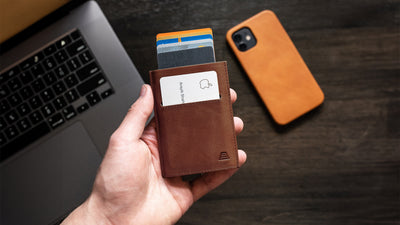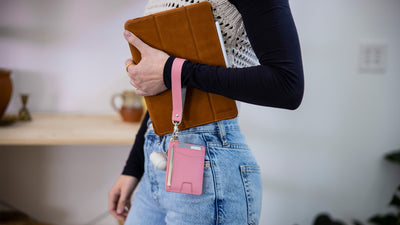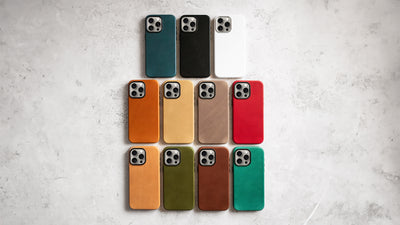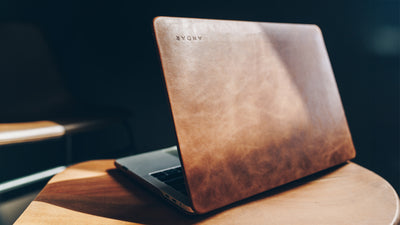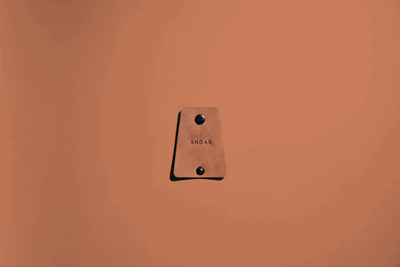The Blog
A Beginner's Leather Scratch Repair Guide
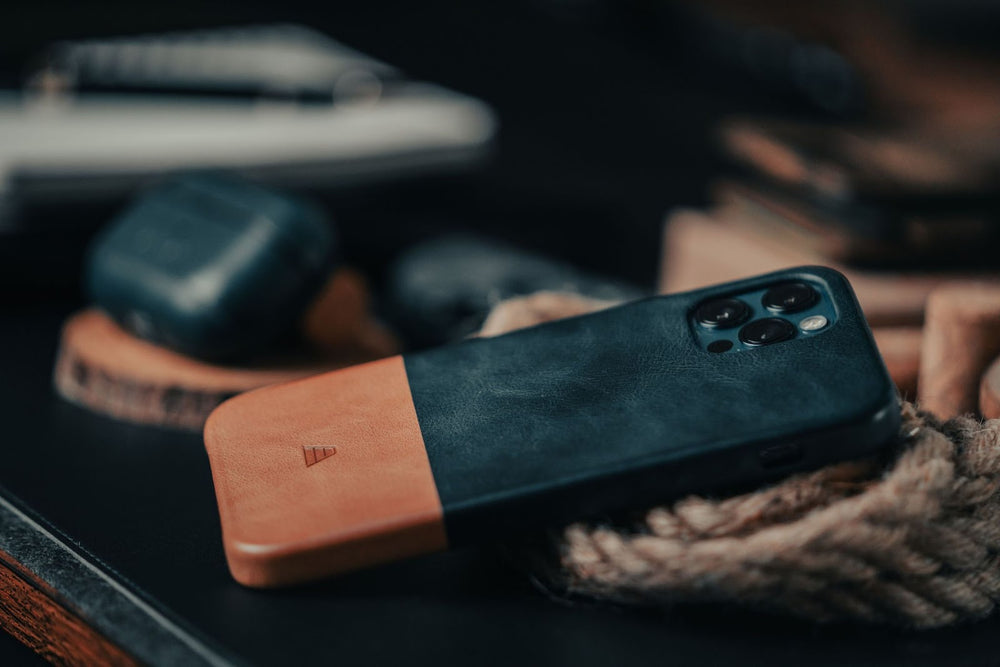
One of leather’s biggest selling points has been the same since its creation in the AD 1000s: its durability. Back then, leather was made and sold to be used day in, day out. They would use it to protect blades, use it in farm production, in the kitchen, and as clothes.
Unsurprisingly, nothing about the use has changed (except maybe the percentage of people using leather to protect the family sword that they just used in a battle with the barbarians).
Still, a large selling point of leather is the fact that you can use it day after day and it will hold up, break-in, develop a beautiful patina, and potentially get better over the years of use if cared for correctly. This is obviously impacted by several things:
- The quality of the leather
- The severity of the use
- The care that you give the leather
- The weather conditions surrounding the leather (mostly moisture)
Still, the durability of your leather is one of the main questions we get at Andar on a regular basis. There are many different types of wear and tear that can impact the effectiveness of your leather item.
They are including, but are not limited to:
- Stretching
- Cracking
- Warping
- Scratching
In this article, we will try to tackle one of the more prevalent of these––scratching.
The Annoying, yet Necessary Preliminary Work of Repairing
Scratches are a natural part of using a leather good. They could come from falling off a bike trying to race your kid and scratching up your leather belt. They could come from a piece of scrap metal that you did not see falling and it rips through your work pants and gives your leather wallet a gnarly scar across the whole surface.
They could be small scratches from putting your laptop with a leather cover into your backpack along with keys and other debris that scratches gradually over time. Each scratch is different and unique, and there is no complete guide, but before you get to work there are a few things to assess.
Figure Out How Deep the Scratch Is
No matter what type of scratch you have, you need to assess its depth. Depth is the most important factor when trying to figure out what you can do to repair your leather item. Depending on the depth of the scratch, there will be different processes (to be talked about later) to try and repair that scratch.
In addition, one big scratch that is deep and across the whole thing will be treated differently than a million little shallow scratches. The leather is potentially going to react differently depending on the age of the leather.
Brand new leather will generally come well-conditioned and will react well to treatment, but leather that has dried up will be harder to revive and not have the scratches be evident.
Visualize How You Want the Leather To Look
While setting unrealistic expectations should be avoided (such as wanting it to look perfect and without blemish), it is helpful to have a general idea of how worn you want the leather to look. In many circles, the patina of a leather good is actually well-sought after. The patina is the worn marks that develop on high-quality leather items over time and with use. If you want this look, maybe minimal scratch repair is necessary.
However, if you want to keep it looking as new as possible for some leather that should look pristine (think dress shoes), you will have to use a bit more elbow grease to get this done.
Remember that leather is skin that has been treated. Just like skin it will scar and be able to heal, but it will not always be able to go back to how it was before. Set your expectations correctly for best results.
Know What Type of Leather You Have
This is something that you should already know, but if you have to research it, do it. Different leather types will react differently to chemicals, products, and treatment. Here are a few guidelines for each type of leather.
Top-grain and full-grain leather will not react well to harsh chemicals, so steer wide and clear of these chemicals if your leather is higher grade. These chemicals will dry it out and strip it of the natural moisture that keeps it supple and durable.
PU and other synthetic leathers do not react well to heat, as the plastics in the leather will shrivel and will struggle to bounce back to how they felt before. Do not use heating scratch repair methods with these types of leathers.
Bonded, genuine, and other hybrid leathers are tough to nail down as they can vary in their percentages of plastic, cowhide, and other materials. To this end, try to keep the chemicals less harsh and the heat down just in case it is sensitive to these types of methods.
It’s Time To Repair
After you have done the annoying preliminary legwork of understanding what type of leather you have, thinking about how you want it to look (within reason). Assess the depth of the scratch or scratches you wish to repair, and then it is time to get down to business. You will need a few supplies first:
- Leather oil or cream
- Microfiber towel
- Small bucket of water
- Area to dry leather
Along with these materials, we would like to offer a small tip at the beginning to help keep you from making a large mistake with the whole of the leather piece. Try treating only a small, inconspicuous section of your leather good first if possible.
This will keep you from messing up your whole item, and it works as a ground zero for testing out the methods. If you have the time, this is the safest tip we can give.
Repairing Light Scratches
Light scratches only need a little bit of help to really come out, especially if you have supple, high-quality leather. There is really only one product you will need to employ to freshen up these little scratches: Andar’s Leather Cream. This leather cream revitalizes and reconditions your leather to help pull the scratches out.
Simply apply the leather cream to a microfiber cloth in very small doses. In circular motions, apply the leather cream to your piece of leather and on the scratches. Keep buffing until the cream is evenly spread around, then grab another clean rag to wipe off any excess leather cream from your leather piece.
One of the most important things is that you let your leather dry for around 24 hours. It may not seem like the leather is wet because the cream is not particularly moist, but because of the cream, your leather is quite supple and susceptible to being warped or damaged before it fully dries. Because of this, letting it dry in a warm room away from direct sunlight is a must.
After this, your light scratches should be buffed out without taking too much work or taking away anything from the leather piece itself. If it is not to your liking, try a second coat, or consider moving on to the deep scratch section.
Removing Deeper Scratches
Deeper scratches require a bit of extra work to get out, but in general, follow a similar formula to those of smaller scratches. The leather cream is still your best friend with these scratches, but it is sandwiched by a couple of extra steps to help strip, repair, then blend the scratch with the leather.
First, clean the leather with a leather cleaner. Try to keep from using too much water as this makes your leather vulnerable to warping and further damage, but cleaning the scratch will allow it to blend in better in the long run. Also, try to get to repairing the deeper scratches as fast as possible as this will aid in your repairs.
Next, do the same process as the light scratch guide. Apply the leather cream to a cloth, circular motions to apply, and let dry. The leather should be even more responsive after cleaning, so if you have tried the first method and think it will be the same and not work, try cleaning beforehand as this changes how the chemicals react to the leather itself.
The last and maybe most optional step is applying a bit of olive oil to the leather after applying the cream. The olive oil will act as a color corrector for the leather and scratch that may help even out the way that the leather looks. Once again, allow it to dry before use.
Flaunt Your Repaired Leather Like It’s New
Now that you have successfully repaired your scratched leather, you can use it as it was intended to be used and how leather has always been used: every day. After it has dried from its new coat of leather cream, your leather should bounce back and feel supple and ready to take on whatever you and the world throws at it!
Sources:
The Real History of Leather - Cure Ignorance | UTNE
